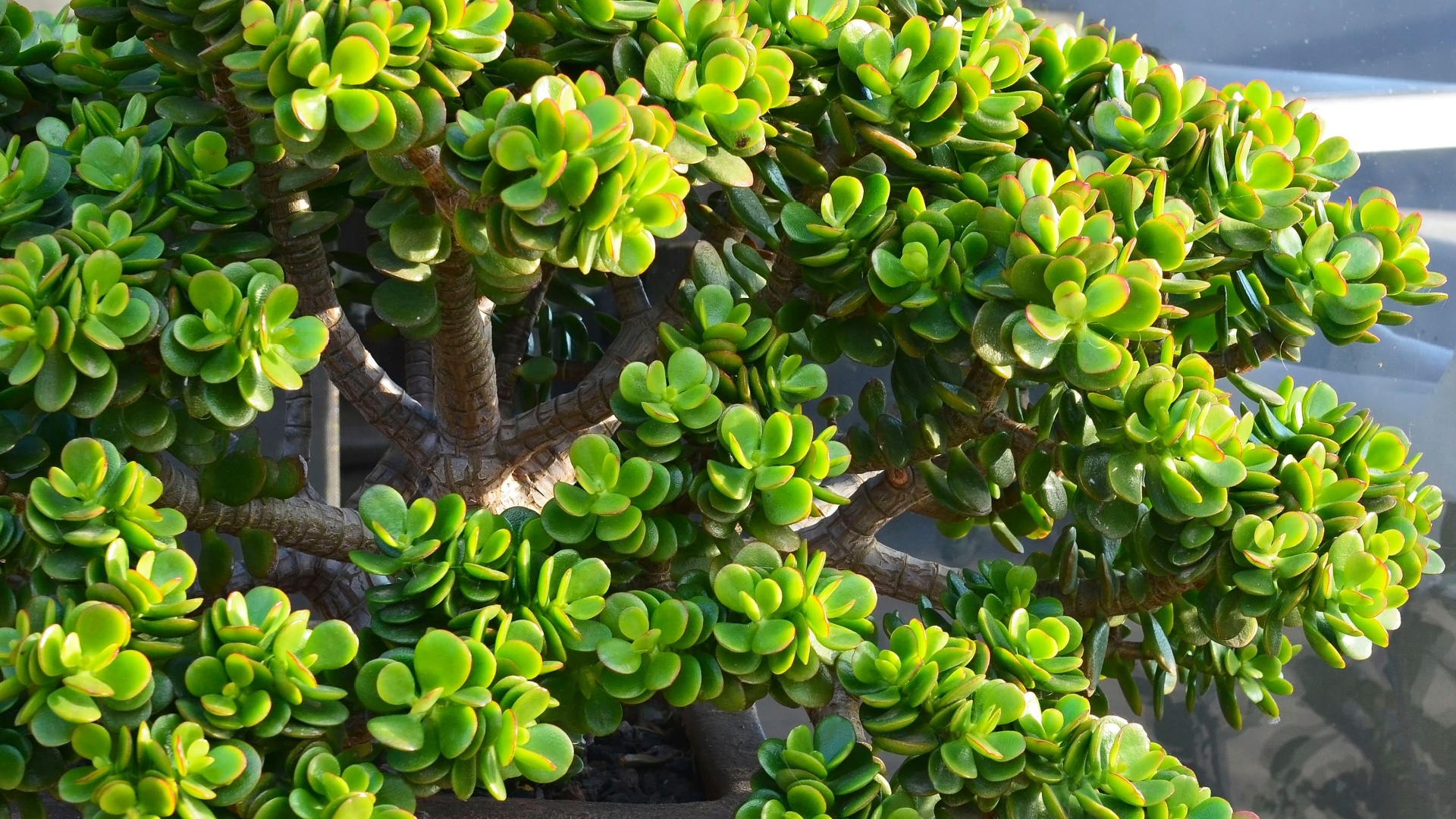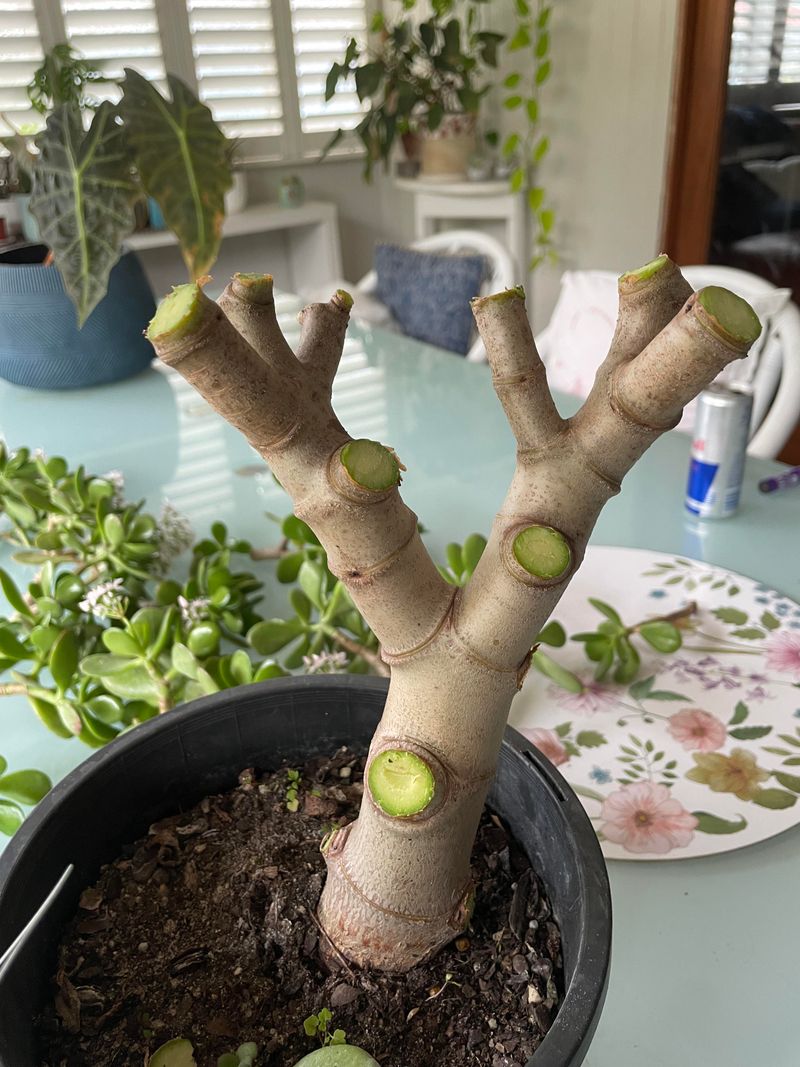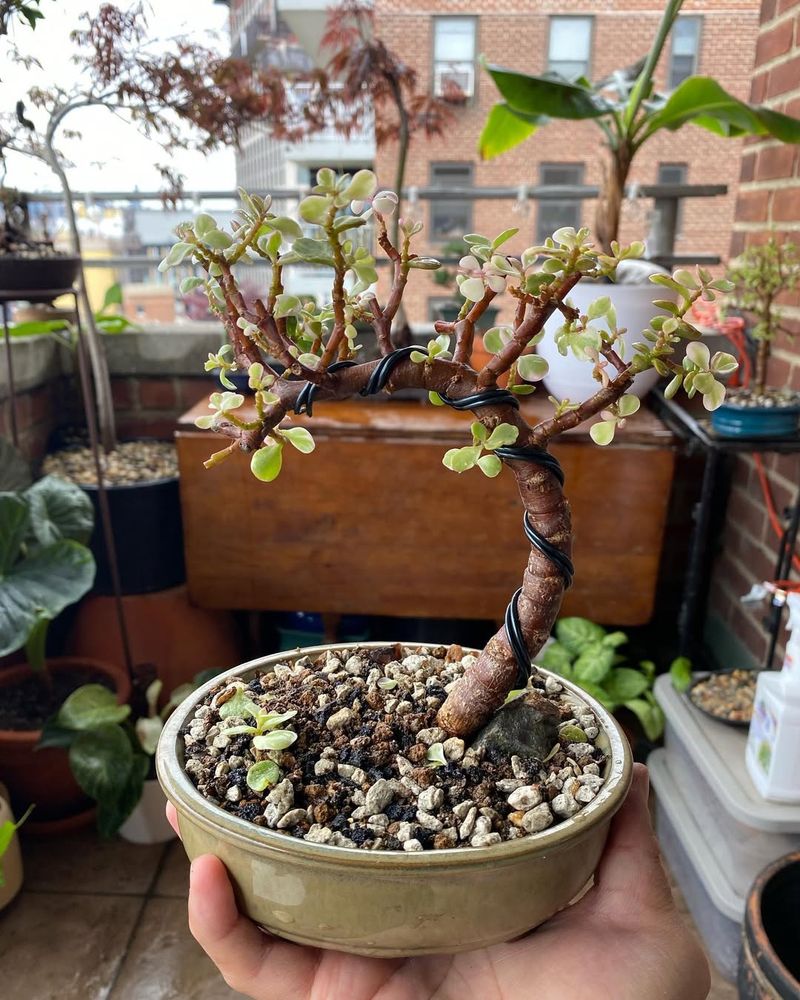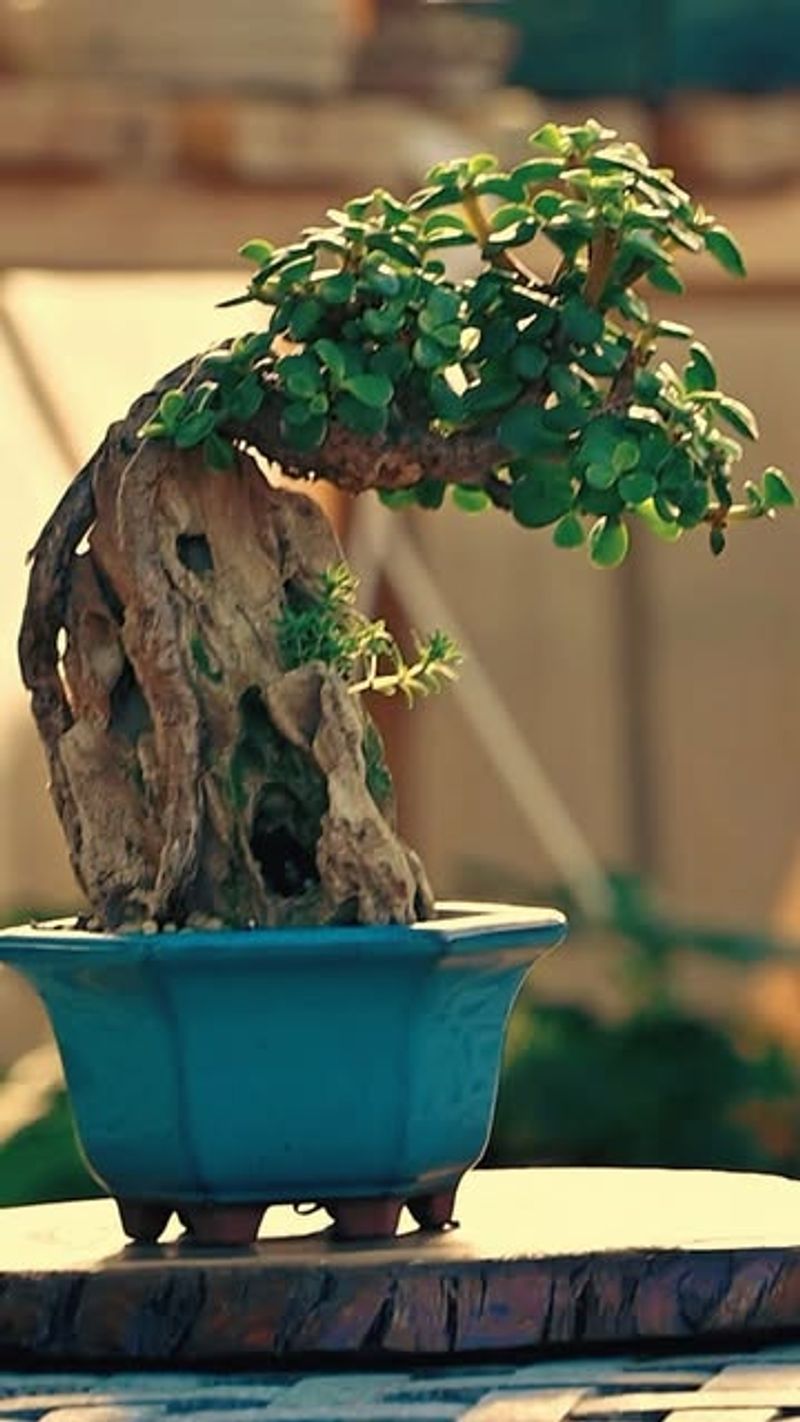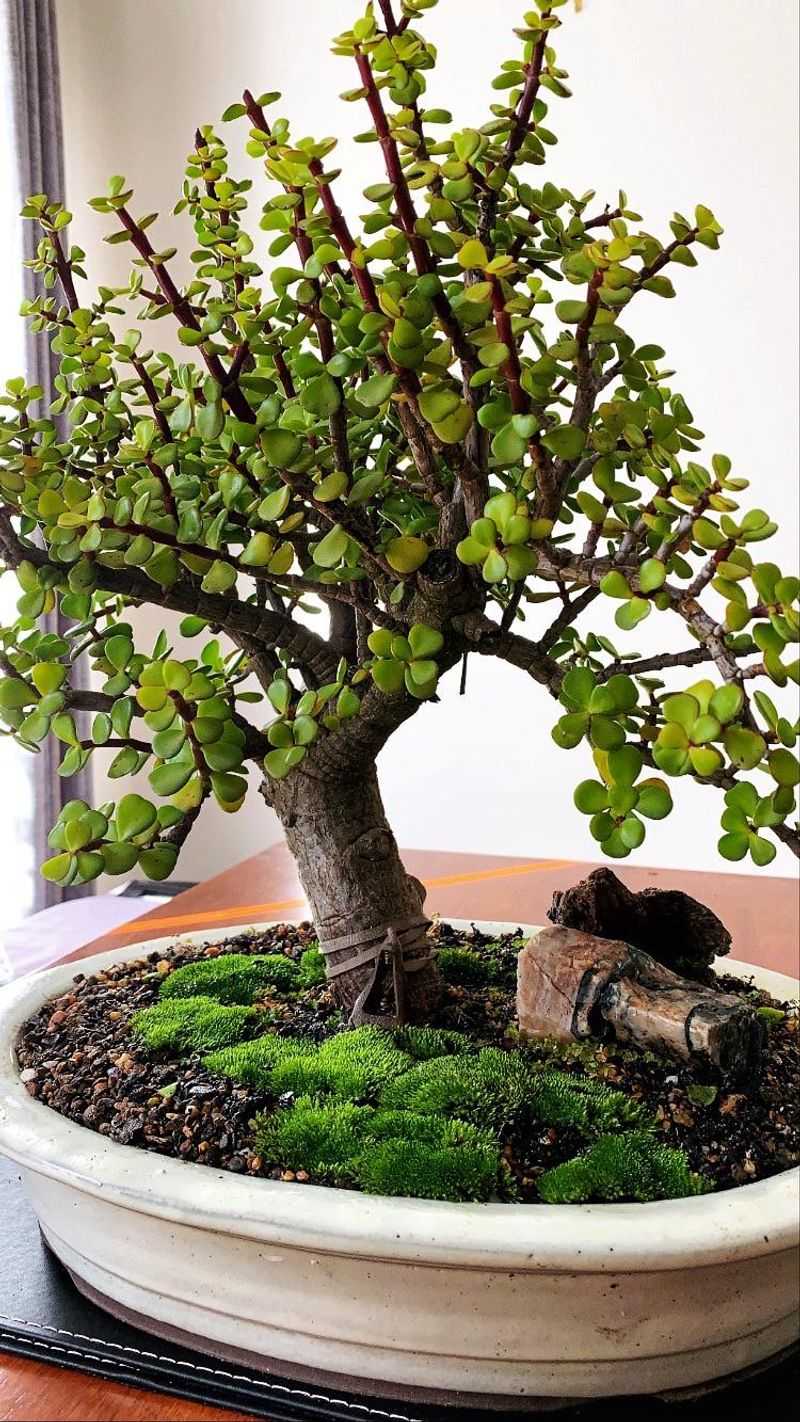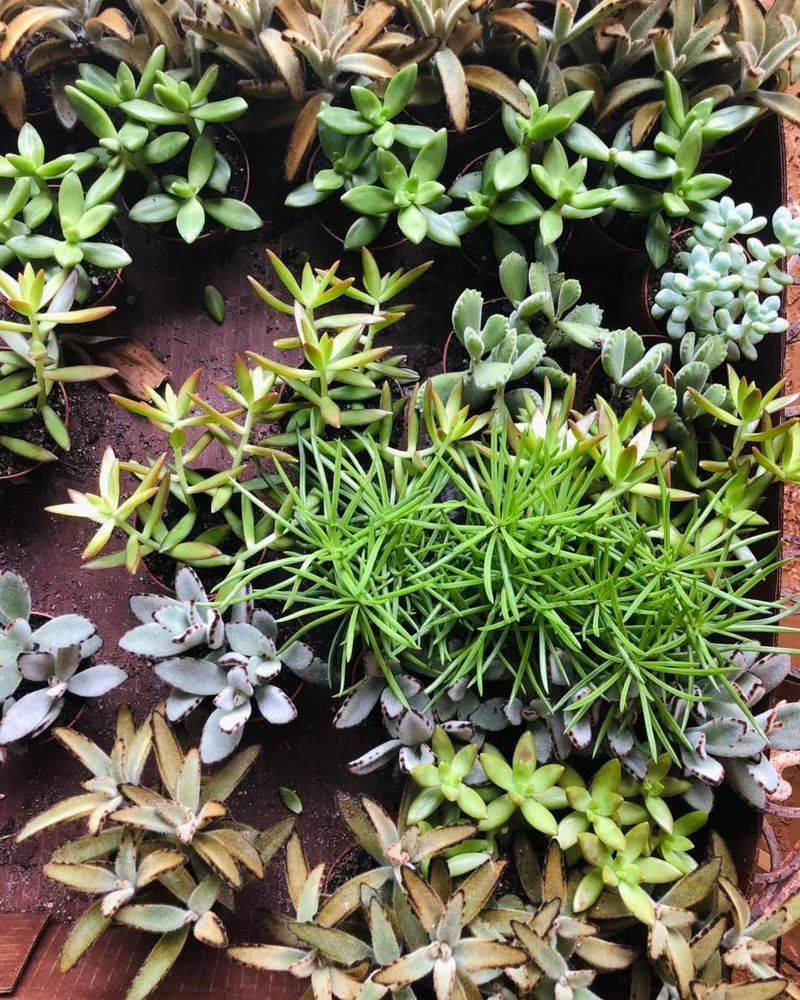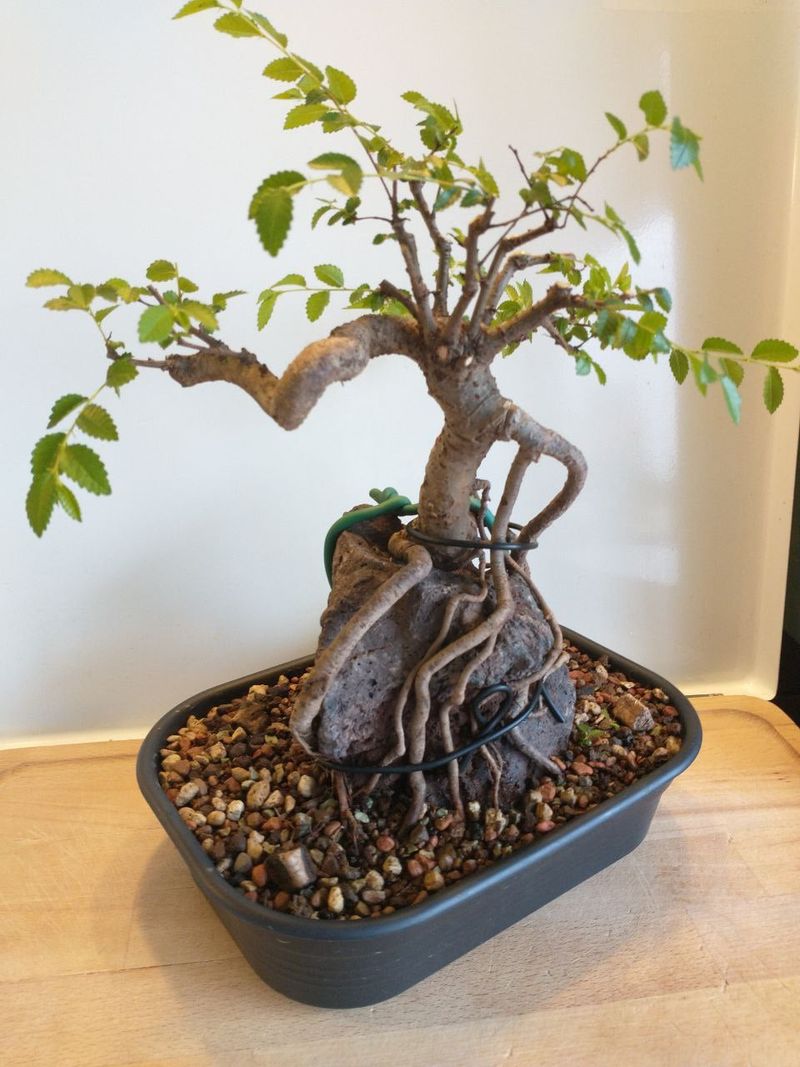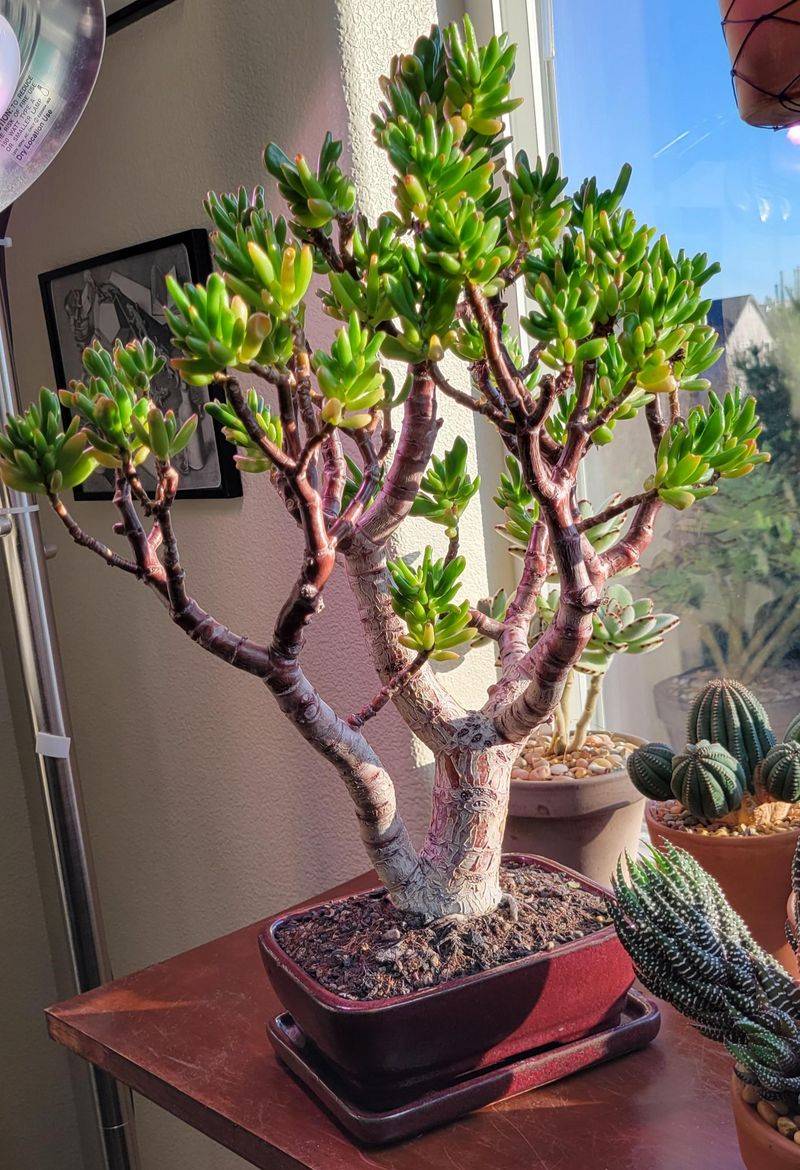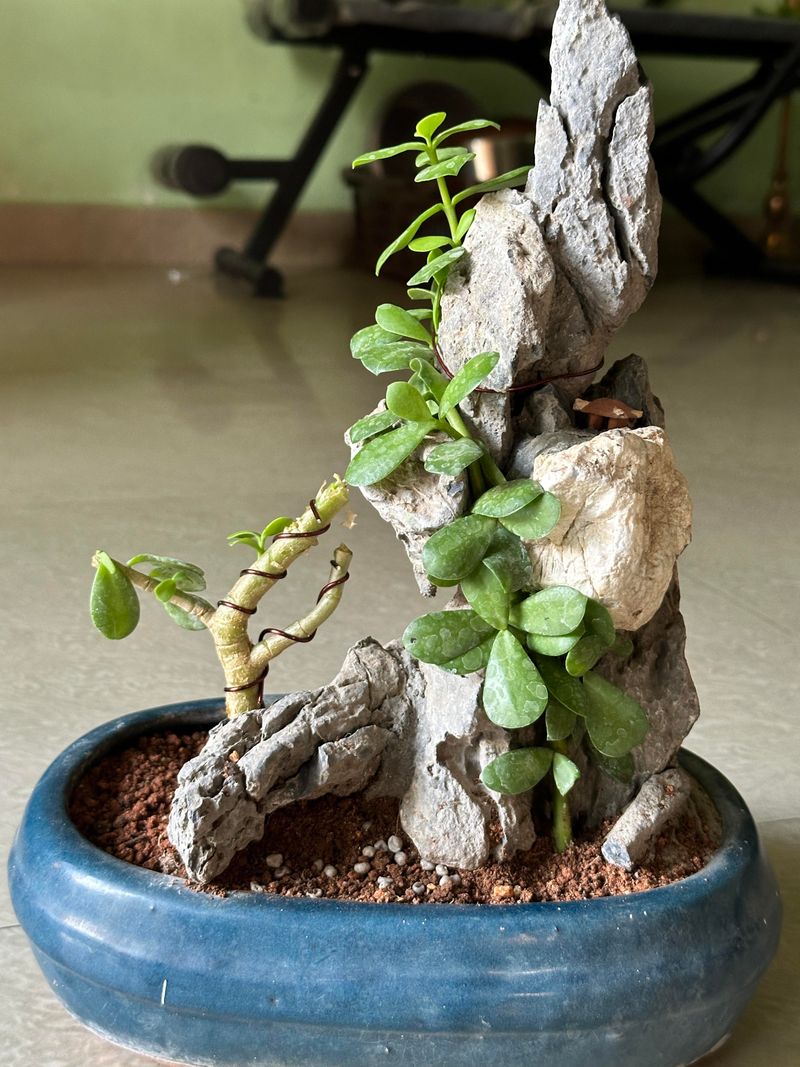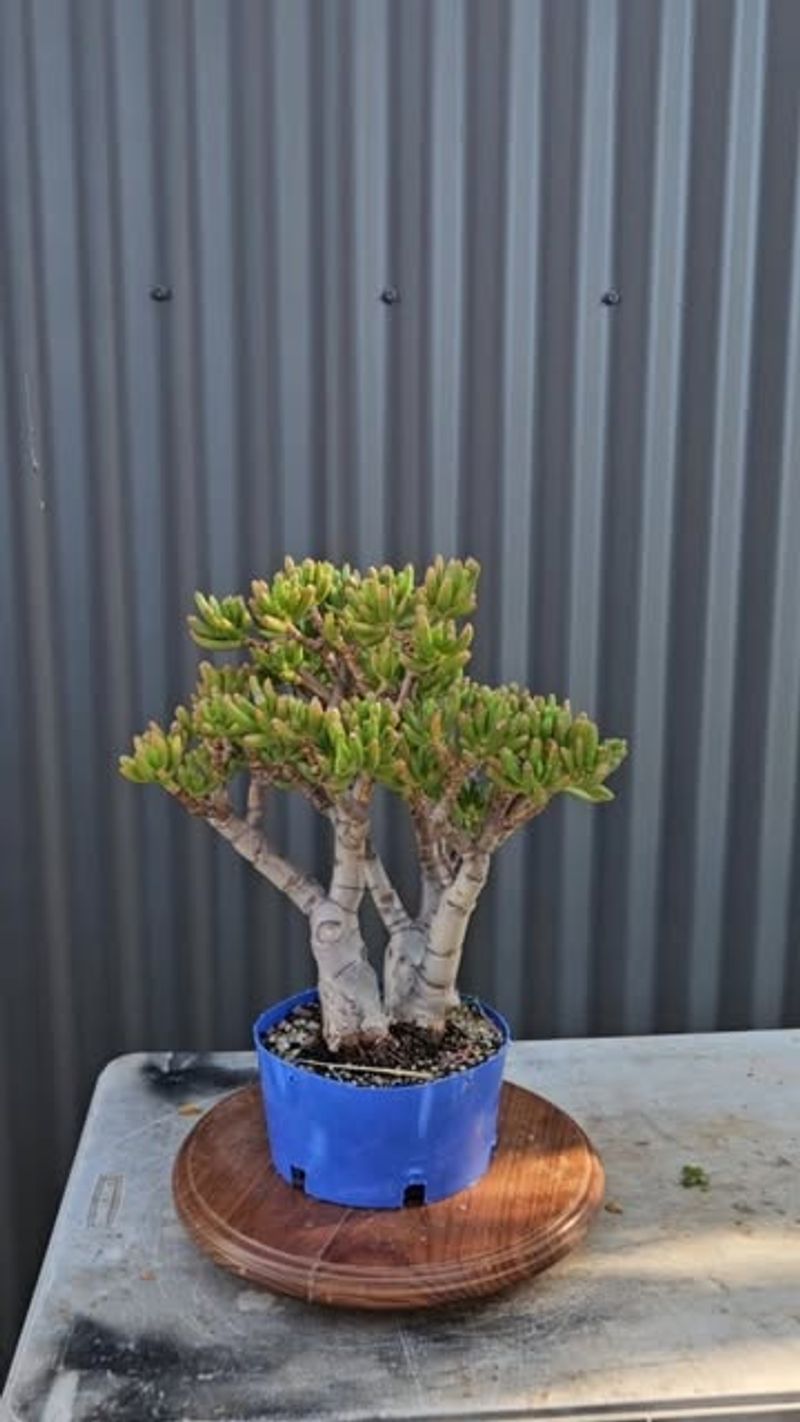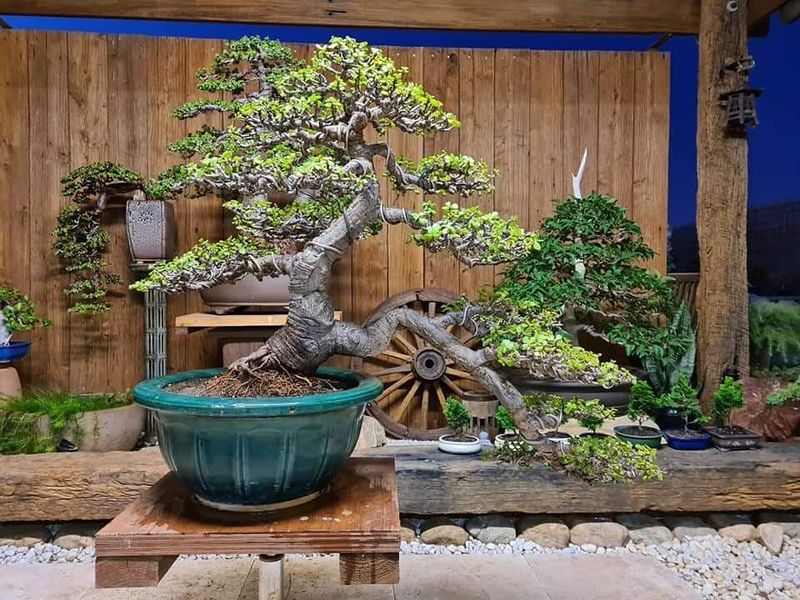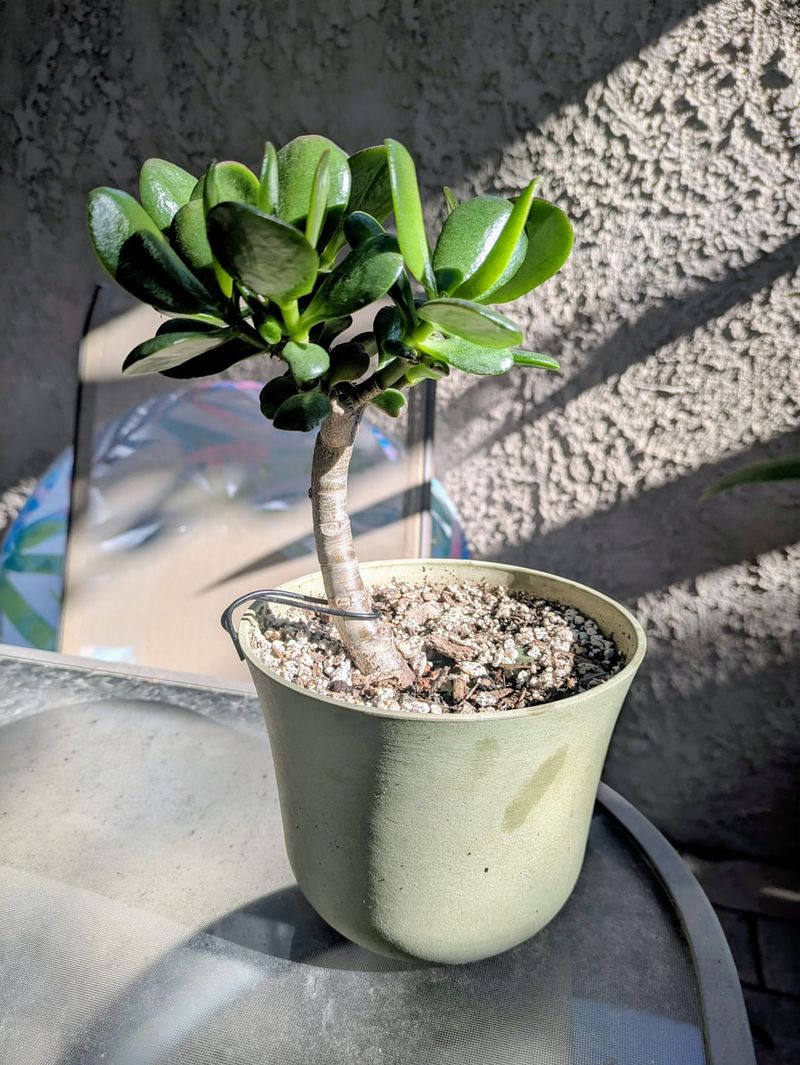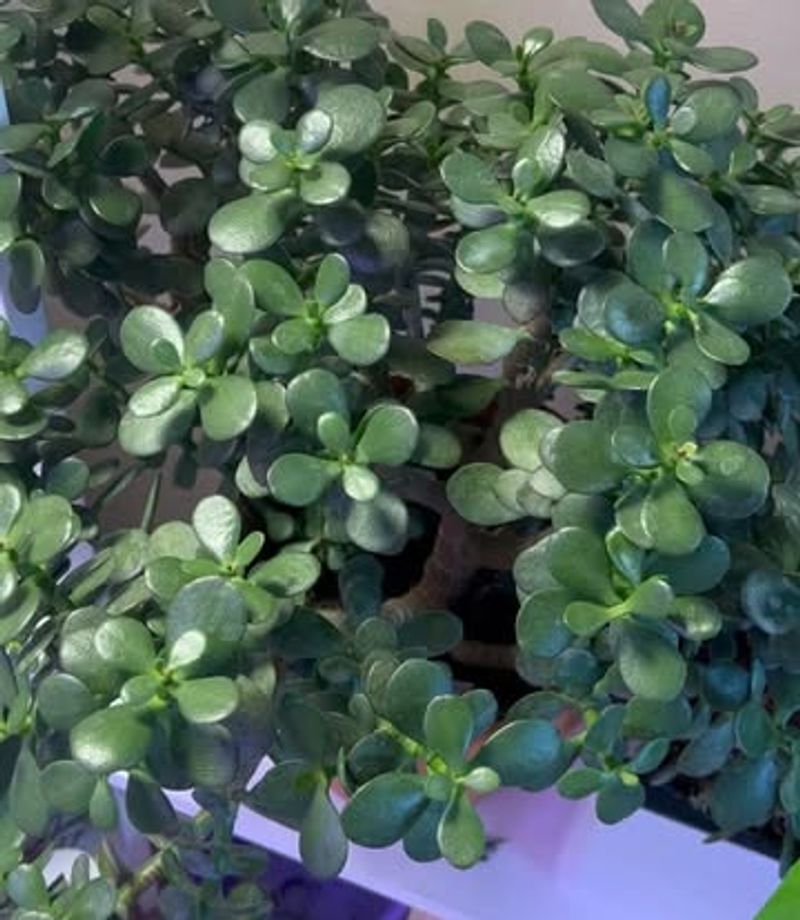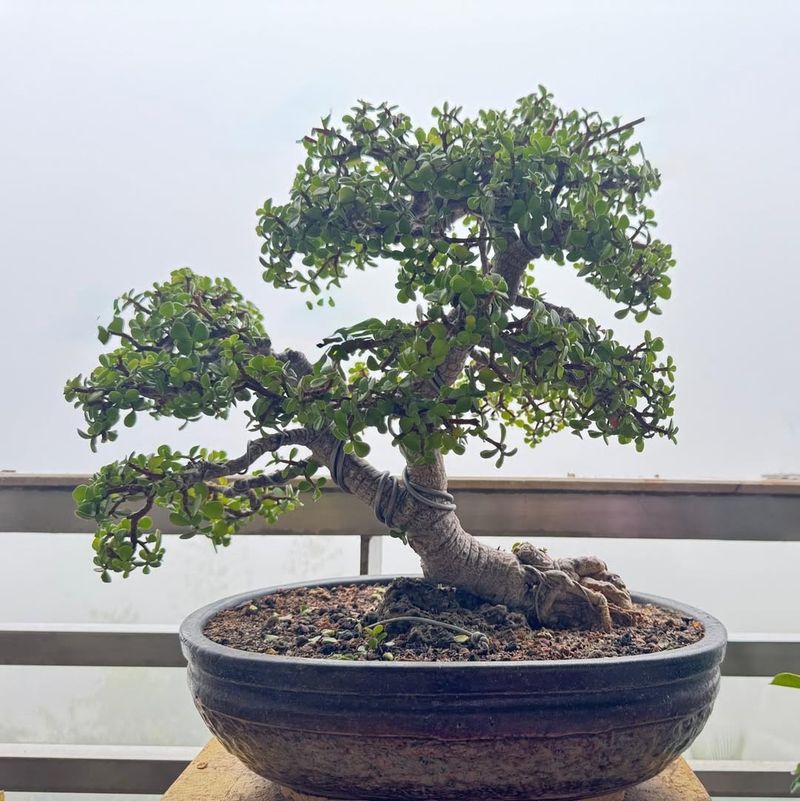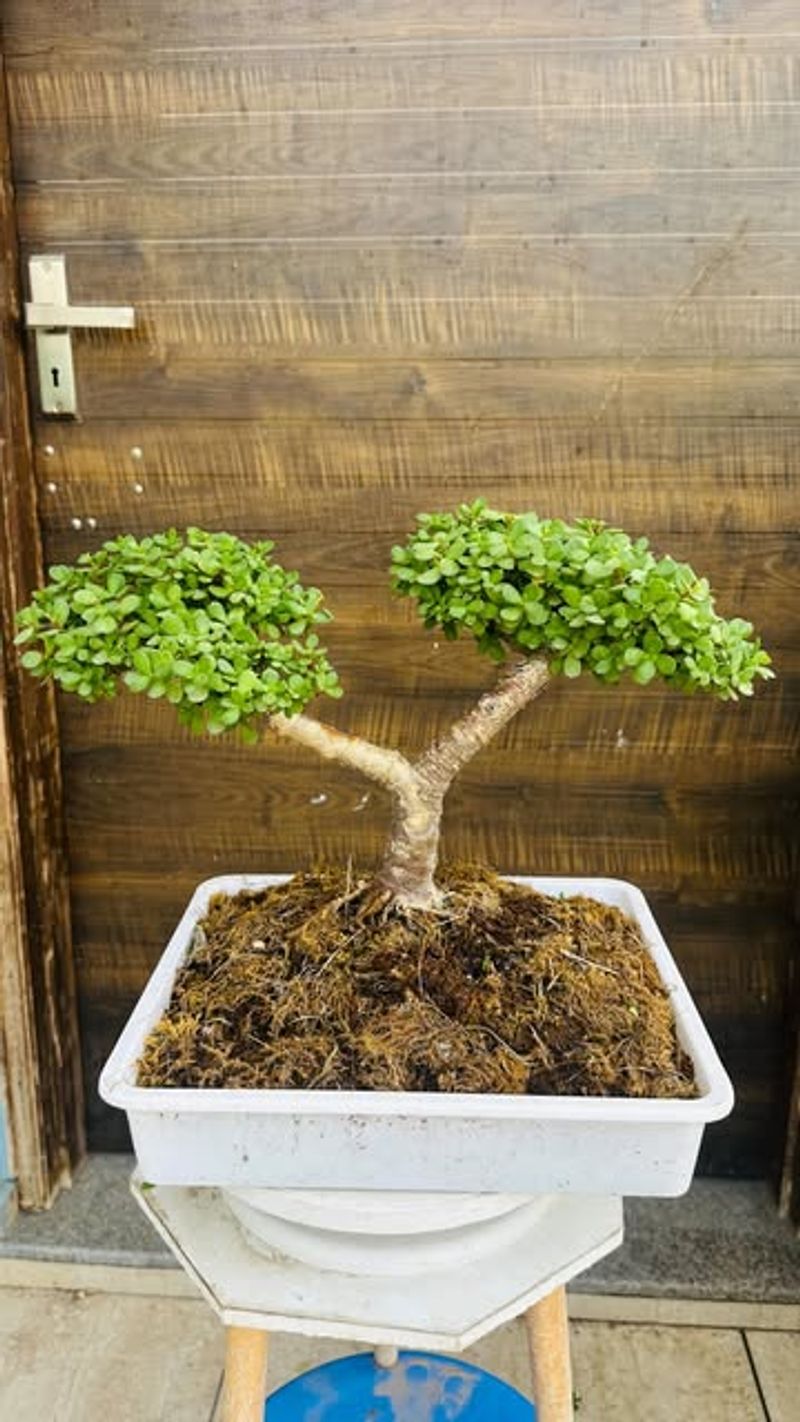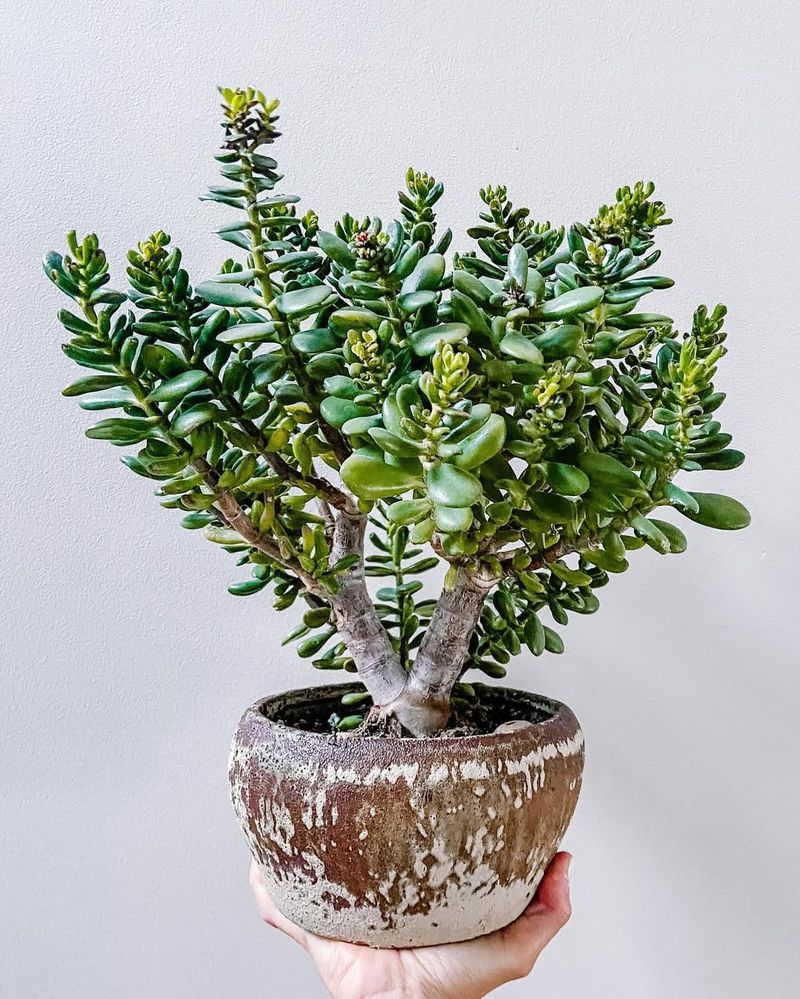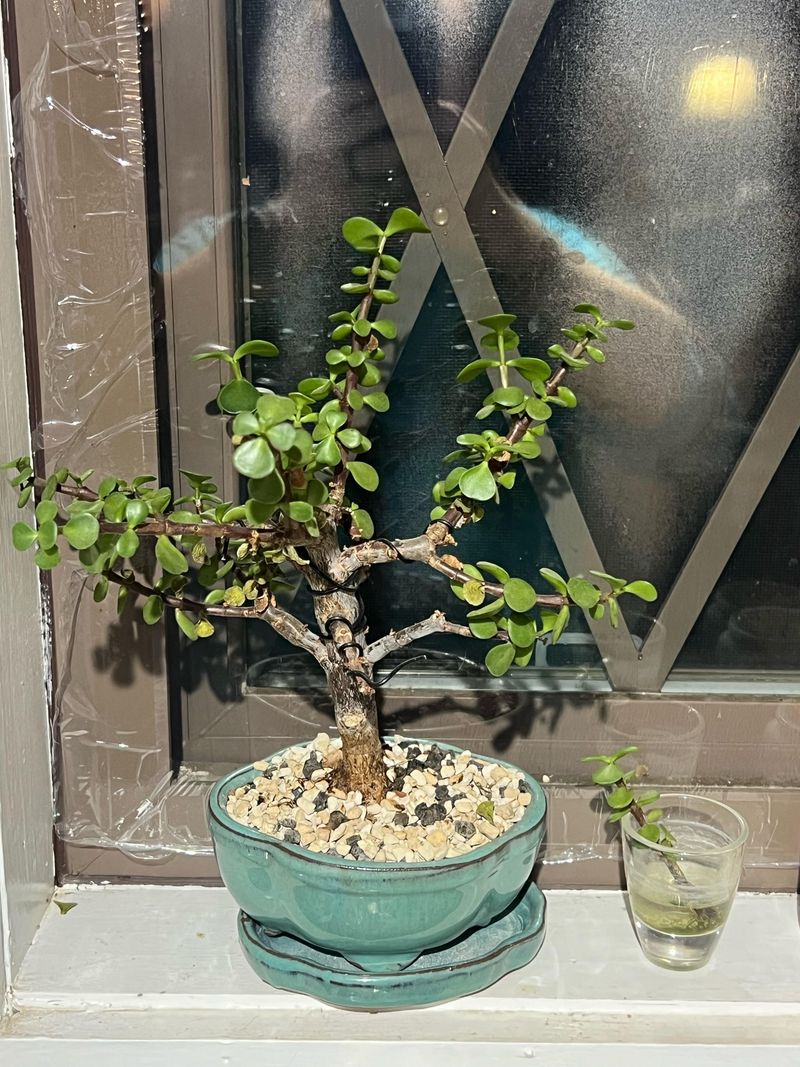Your little jade plant has big potential—and with the right care, you can grow it into a bold, tree-like beauty that becomes the star of your space. I’ve learned firsthand how a few simple techniques can transform this humble succulent into a sculptural indoor tree that adds instant charm and calm.
Here are 16 tried-and-true ways to help your jade plant grow tall, strong, and stunning—right from your windowsill.
1. Prune for Height
Regular pruning encourages your jade plant to grow taller rather than wider. Snip off lower branches and leaves to create a bare trunk that resembles a miniature tree. This technique, called “lollipoping,” directs energy to the upper growth.
Use clean, sharp scissors or pruning shears to make cuts just above a leaf node. The plant will heal quickly and focus its growth upward. Save those cuttings too – they can easily become new jade plants!
2. Train with Wire
Borrow techniques from bonsai artists by gently wrapping aluminum or copper wire around younger branches. The malleable wire guides growth direction without damaging the plant, allowing you to create elegant curves and shapes.
Leave the wire in place for 3-4 months, checking regularly to prevent it from cutting into the growing branch. Once removed, your jade will maintain its new position, giving it that coveted artistic tree silhouette.
3. Root-Over-Rock Planting
Create a dramatic landscape effect by planting your jade over a decorative rock. Start with a younger plant and position its roots to drape over the stone before covering with soil. As it grows, the roots will thicken and grip the rock.
This method mimics how trees in nature sometimes grow over boulders. The exposed roots become part of the visual appeal, adding age and character to your indoor tree. Choose rocks with interesting textures or colors for extra impact.
4. Strategic Pot Selection
The right container transforms your jade’s appearance dramatically. Select shallow, wide pots to enhance the tree-like illusion – bonsai pots work perfectly! Their proportions make the plant appear larger and more established.
Earthy tones like terracotta complement jade’s green leaves, while black or white containers create modern contrast. Consider the pot’s texture too; rough, unglazed surfaces suggest age and weathering, reinforcing that ancient tree feeling in your indoor masterpiece.
5. Add Decorative Ground Cover
Miniature landscapes elevate your jade from houseplant to living art. Spread small pebbles, moss, or crushed glass around the base to mimic a forest floor. These elements create a polished, complete scene while helping retain soil moisture.
For extra charm, add tiny figurines or miniature benches beneath your jade tree. Green moss works wonderfully for a woodland feel, while white sand creates a zen garden aesthetic. This simple addition makes your plant feel like a magical miniature world.
6. Expose the Roots
Raised planting showcases your jade’s fascinating root structure. Gradually expose the upper roots during repotting by positioning the plant higher in its container and gently brushing away soil from the top roots.
Over time, these exposed roots thicken and develop beautiful bark-like textures. The technique, called “nebari” in bonsai practice, creates a stunning flared base that mimics ancient trees in nature. Mist these exposed roots occasionally to prevent them from drying out completely.
7. Create a Multi-Trunk Masterpiece
Plant multiple jade cuttings together to form a grove or forest effect. Select stems of varying heights and thicknesses, then arrange them in an odd number (3, 5, or 7) within the same container.
As they grow, the multiple trunks will create a stunning miniature forest. Position thicker, taller plants toward the center with smaller ones around the edges for natural perspective. This arrangement mimics how trees grow in groups in nature, creating visual depth and complexity.
8. Trunk Fusion Technique
Young jade stems can actually be twisted together and fused as they grow! Plant 3-4 small cuttings very close together, then gently twist them around each other. Secure with soft plant ties until they begin growing together.
Over months, the stems will fuse into one thicker, braided trunk with beautiful texture. Remove the ties once fusion begins. This technique creates extraordinary visual interest and makes even young plants look like they’ve been growing for decades.
9. Selective Leaf Reduction
Smaller leaves create better proportions for your indoor tree. Regularly removing larger leaves encourages the plant to produce smaller, more numerous leaves that look more in scale with a miniature tree.
Focus on the outermost growth, plucking larger leaves during the growing season. The plant responds by producing more compact foliage. Don’t remove too many at once – spread this technique over several months for the healthiest results and most natural appearance.
10. Dramatic Slanting Style
Wind-swept trees capture our imagination with their resilient, angled growth. Create this effect by planting your jade at a 45-degree angle in its pot. Use rocks to secure it while new roots establish in this position.
Prune branches to enhance the directional flow, keeping more growth on the side opposite the lean. This style, called “fukinagashi” in bonsai, suggests your tree has weathered imaginary coastal winds for years. The dramatic angle instantly transforms an ordinary jade into an artistic statement.
11. Trunk Thickening Methods
Thick, textured trunks are hallmarks of mature trees. Accelerate this development by strategic pruning – cut your jade back dramatically in spring, leaving only the main trunk and a few branches. The plant responds with explosive new growth and a thicker trunk.
Another method involves gently scratching the trunk’s surface with a sterilized tool. These micro-injuries cause the plant to develop protective bark-like tissue. Combined with bright light and proper fertilization, these techniques transform slender stems into impressive trunks within a year.
12. Cascading Waterfall Effect
Gravity-defying cascades create showstopping displays. Place your jade in a tall pot and train branches to grow downward over the edges, mimicking trees that cling to cliffs in nature.
Support longer branches with wire until they strengthen in their new position. Regular pruning encourages dense foliage along the cascading branches. This dramatic style, inspired by mountainside trees, transforms your jade into a living waterfall of green that captures attention from across the room.
13. Deadwood Feature Creation
Ancient trees often display beautiful deadwood elements that tell stories of survival. Create this weathered look by carefully stripping bark from selected branches using sterilized tools. Leave these sections exposed while the rest of the plant continues growing normally.
The exposed wood will naturally lighten over time. For faster results, apply a small amount of lime sulfur (available at bonsai shops) to the stripped areas. This technique, called “jin” or “shari” in bonsai art, adds tremendous character and age to your jade tree.
14. Canopy Shaping for Balance
A well-balanced crown transforms your jade into a convincing tree. Visualize a triangle or dome shape, then prune accordingly to create a proportional canopy. The widest part should be in the lower third of the foliage mass.
Step back frequently while pruning to check the overall silhouette. Thin crowded areas to allow light penetration throughout the canopy. This balanced approach creates the illusion of a mature tree that has grown naturally for years, with the perfect proportion between trunk and foliage.
15. Elevation Display Methods
Raising your jade plant increases its visual impact dramatically. Place it on a decorative stand, wall shelf, or hanging platform where it can be viewed from below – just like looking up at a real tree!
This elevated positioning allows branches to cascade naturally and showcases the trunk’s details. Consider rotating your plant occasionally so all sides receive equal light. The height not only creates a striking display but also keeps curious pets from nibbling on your prized indoor tree.
16. Seasonal Accent Lighting
Strategic lighting transforms your jade tree into living sculpture. Position a small upward-facing grow light to cast dramatic shadows of branches against the wall, creating twice the visual impact.
For special occasions, wrap the trunk with tiny fairy lights to highlight its form. The gentle illumination emphasizes texture and creates a magical atmosphere. Even simple solar-powered stake lights placed around the base can create beautiful effects as light filters through the leaves.

